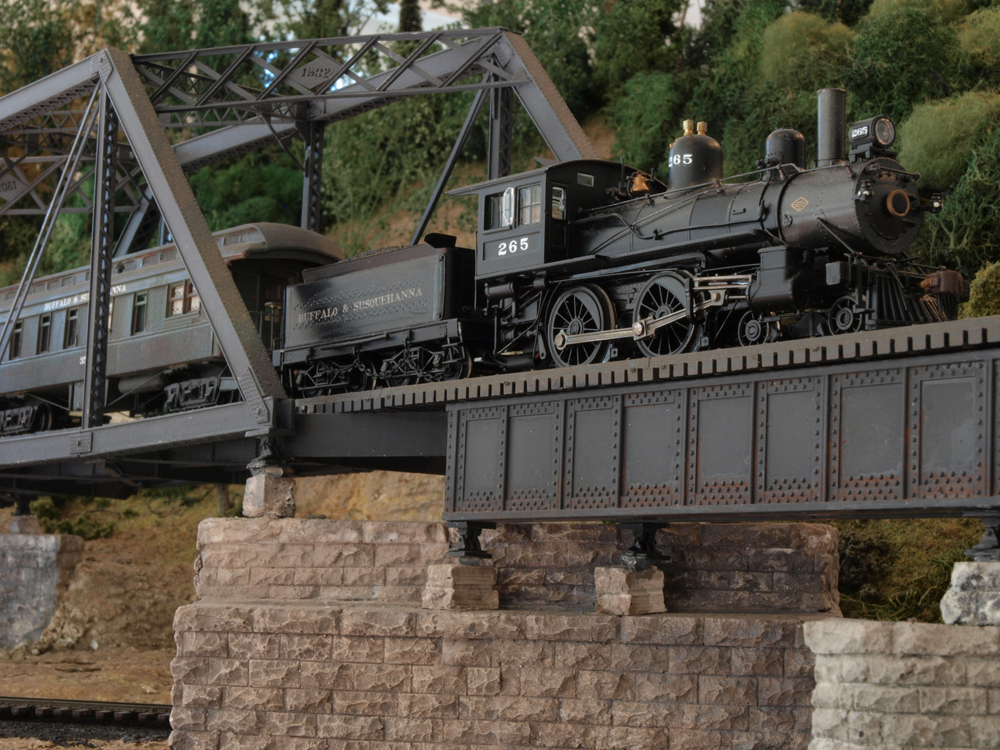
For most of my 70 plus years I have been interested in trains. Wherever I lived, I built a number of layouts in basements and attics. It was not until I became interested in the life of the Buffalo & Susquehanna Railroad that I thought it would be a railroad to model. It could not be called a short line, at only 300 miles in length, but it was very fascinating because it had to overcome main line switchbacks, steep grades, tight curves, and fierce competition. The company started out in the logging business in 1885 hauling lumber out of Austin, Penn. under the name Sinnemahoning Valley RR. Then in 1893 it was reorganized as the Buffalo & Susquehanna (B&S) and the lumber business became the Goodyear Lumber Co. When the forests became depleted, the company got into the coal and coke business. They operated a number of coal mines and coke ovens north of Pittsburgh. Then in 1932 the Baltimore & Ohio (B&O), looking to expand into Buffalo and Rochester NY, acquired the B&S and its neighbor, the Buffalo, Rochester & Pittsburgh (BR&P). The B&O operated the B&S portion of this acquisition until 1955 when the Salzberg Scrap Company purchased what was left of the B&S and operated it until 1979 as the Wellsville Addison & Galeton (WAG).
Because I was so interested in the B&S, I made many trips into Pennsylvania to visit the line, talk to retired employees, and at times rode the WAG. I amassed so much information, photos and material that I published a book on the subject in 1966.
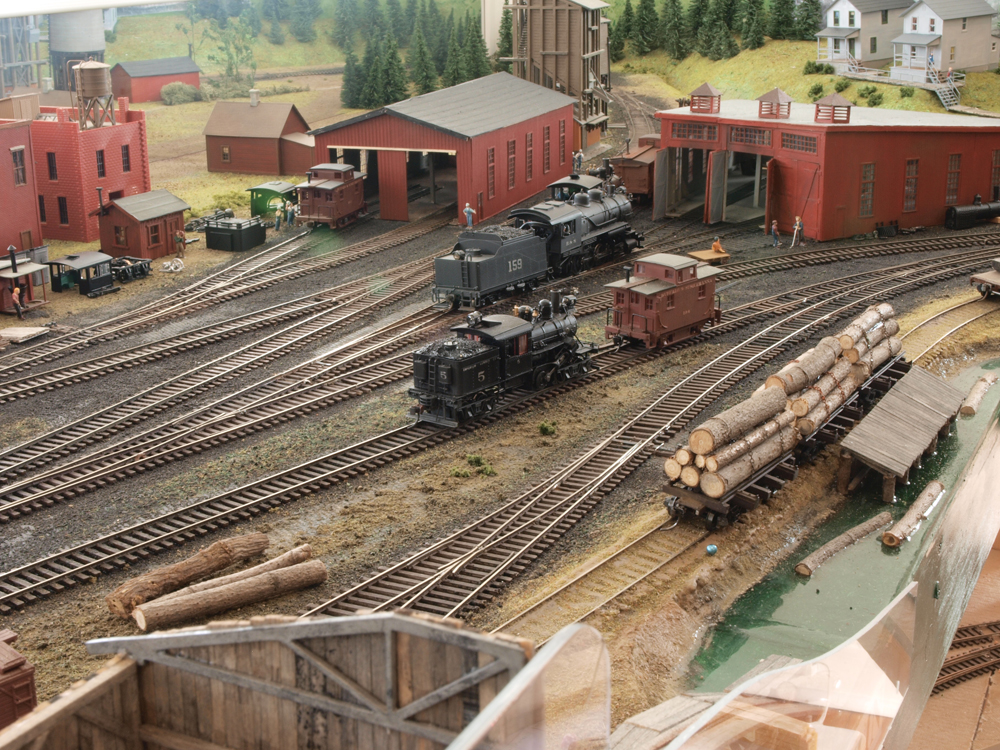
What really got me thinking of building a layout depicting the B&S was the availability of the B&O 2-8-0 class E-60 by Sun Dancer. This was an actual B&S locomotive! Also the Old & Weary Car Shop came out with a set of B&S hoppers. This clinched it, I had to build a layout! Coming off a 20-year hiatus from model railroading, and at 70 years old, this would be maybe my last attempt at building a layout. I started to plan a layout depicting the B&S. The Buffalo & Susquehanna lent itself to modeling. It was a small railroad with small facilities. It had tight curves and steep grades. Ten car trains were the norm rather than the exception and it served the lumber and coal industries.
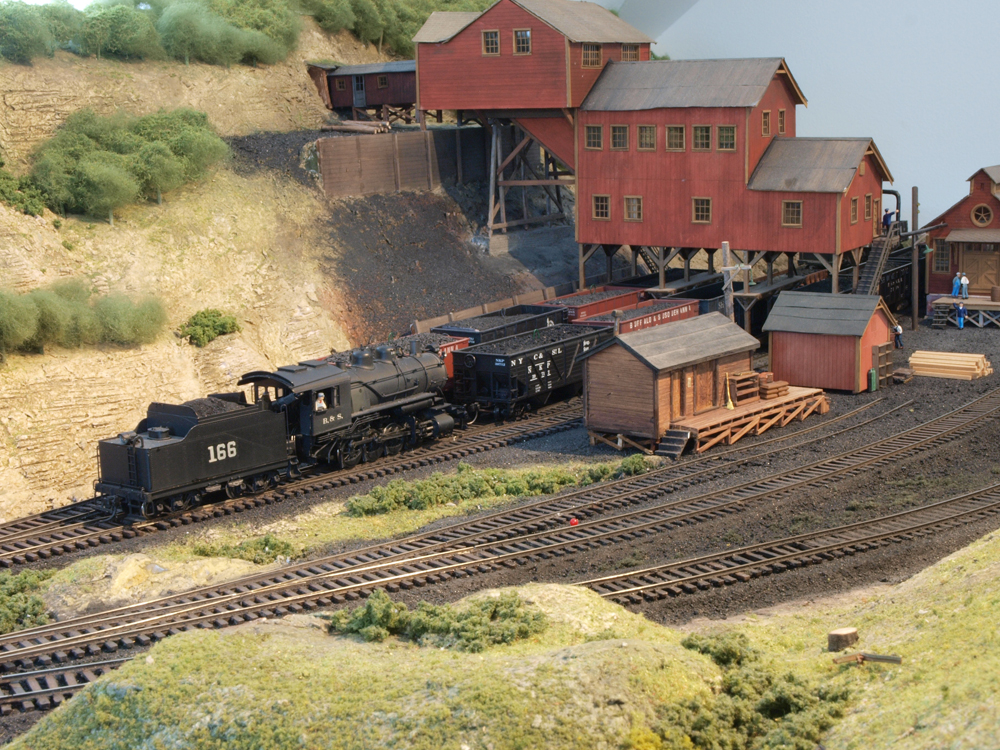
I started building the layout in 2005 in an 1840 house which we purchased the year before. There was one major drawback – I had no basement or great room to build what I would consider the dream layout. What I did have was a 15 by 15-foot bedroom on the second floor. To put in as much as I could to simulate the B&S realistically, I had to do it on two levels using a helix. The other thing I realized was that going point to point would save room and that’s how real railroads run. To get better acquainted with the B&S, I went to the Pennsylvania Railroad Museum in Strasburg where there is a collection of B&S blueprints. These blueprints came in handy while modeling structures.
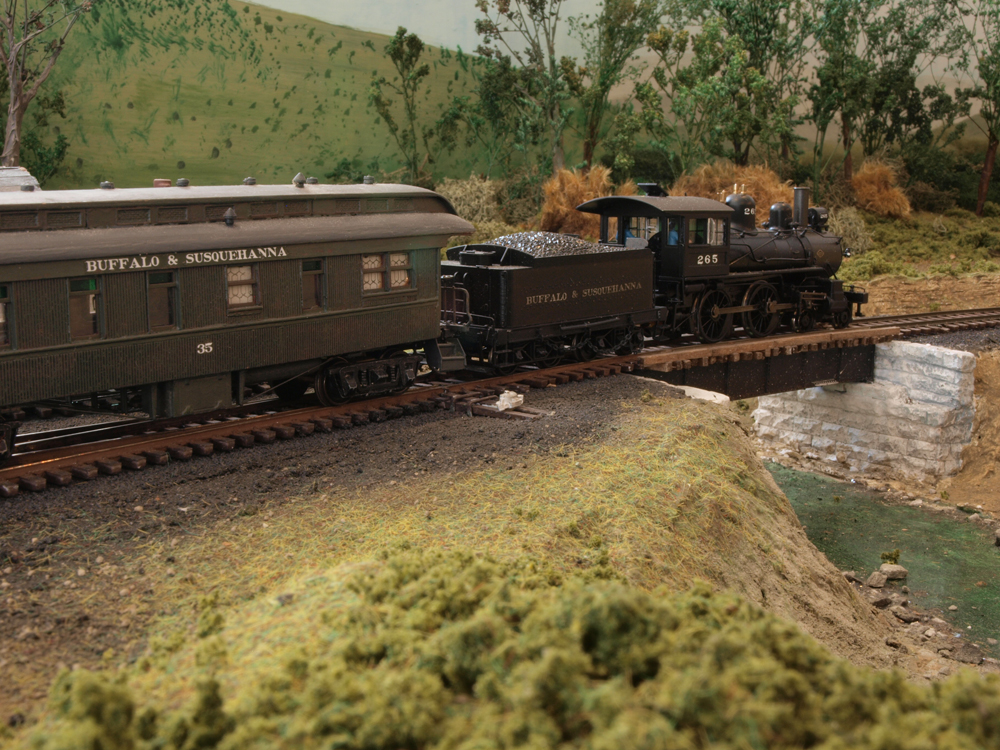
Having limited space, I could not incorporate all the great features of this interesting little railroad such as the switchbacks, Newfield Junction, or the shops at Galeton. That would take up too much room. However, I could build the shop facility at Austin. This was where the original shops were located. There was a roundhouse, back shops, depot and the Goodyear Lumber Company. Another feature I could model was Wharton where there was a wye. One leg of the wye led to Austin, one led to the mines, and the third leg led to Galeton and the main B&S shops, which I was not going to model. Beyond Galeton were interchange points with the Erie and the NYC. I chose the interchange at Addison to model. These were all small yards and easy to duplicate. I admit that I had to use some artistic license in the modeling process. For example, there was a wye at Addison, and I put in a turntable in Austin. I also had to turn the roundhouse 90 degrees in order to fit the space I had. The model of the coal mine at Sagamore is nothing like the actual mine complex. It was a very large operation in reality.
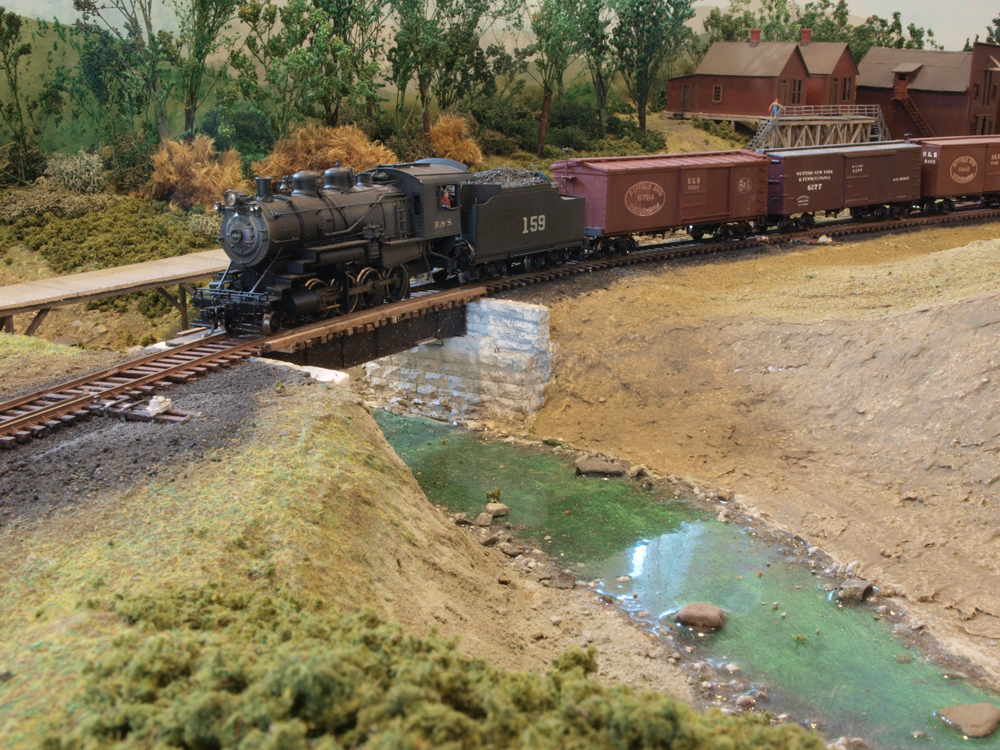
Since this was a new layout, it was set up for DCC by Digitrax and all seven locomotives were equipped with sound. I used Code 70 rail and No. 6 switches by Micro Engineering. The curved turnouts on the layout are by Shinohara. On the lower section of the layout I used Code 83 rail. The curves were held to a 24-inch radius minimum. For the roadbed I laminated two half-inch Homasote sections together; I prefer Homasote to using plywood for roadbed. The helix was put together in the basement workshop by using 3/16-in. plywood and laminating segments to build a four-foot continuous circle. It was a like a giant slinky. I took this up to the railroad room and installed it with a 3 percent grade leaving a minimal clearance between loops. In this old house with its sloping floors, the helix was a challenge.
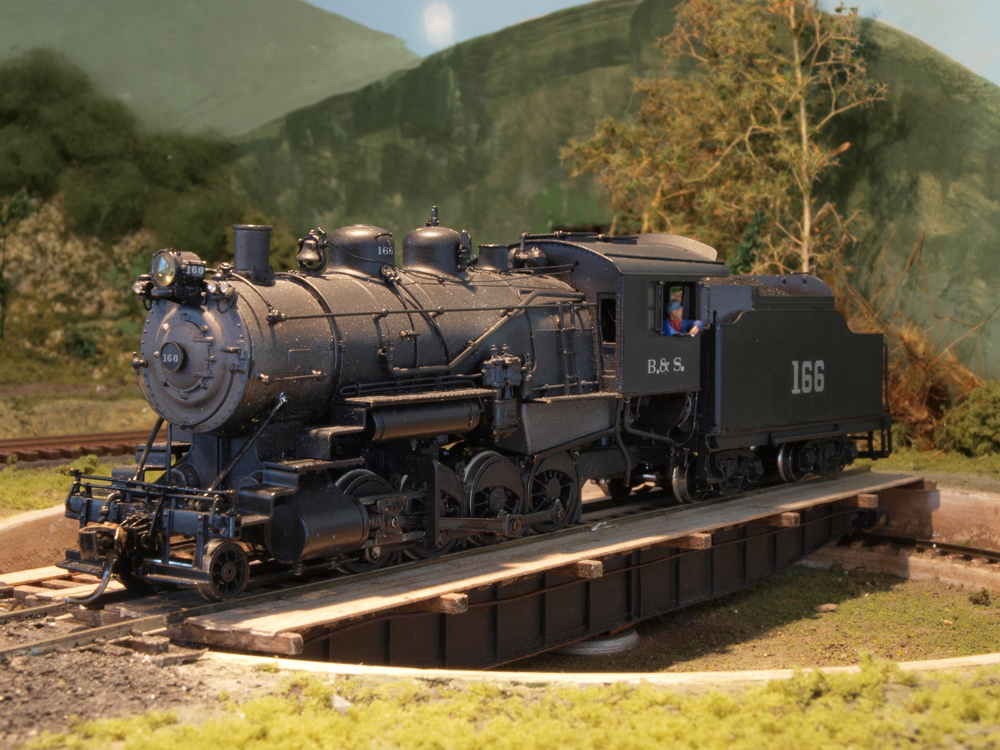
I built a staging yard on the lower level which I call Hornell. This is a very small area but does the job since I only run short trains. The Erie had major yards and shops in Hornell. Hornell is where the empty cars come from, and the loaded cars go. I might add that the coal loads and lumber loads are removable and are able to be taken out of the cars at Hornell and then put back in at the mine at Sagamore or at the saw mill in Austin.
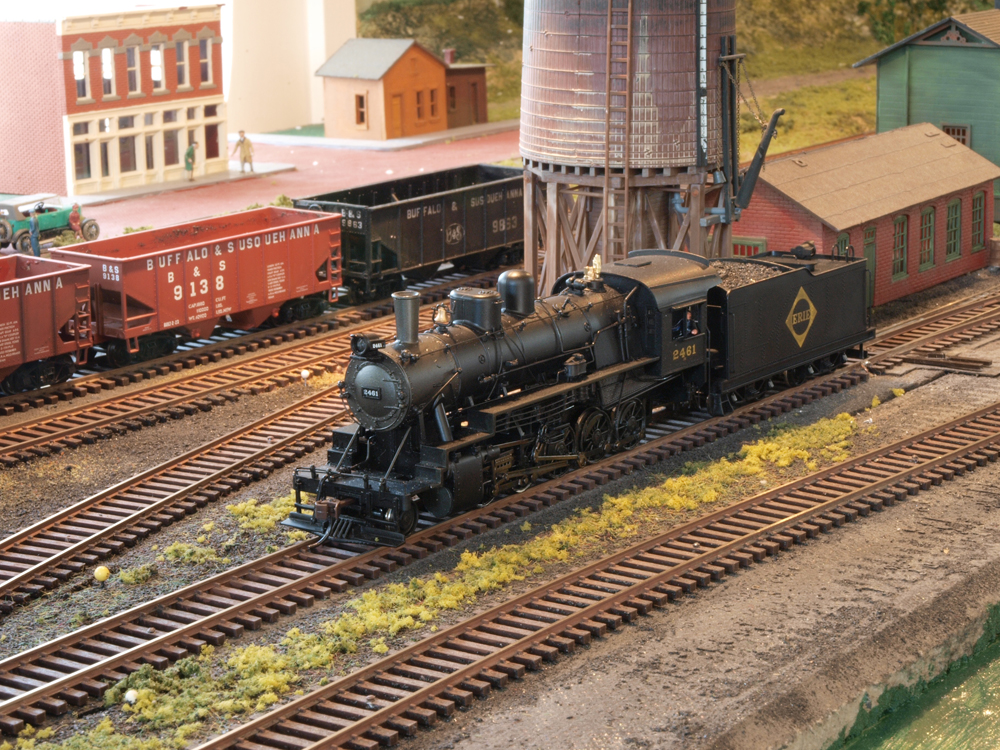
On the layout, the Erie runs from Hornell to Addison using a Bachmann 2-10-0. Two B&S 2-8-0s are housed in Austin and one in Addison. The lone passenger engine, a Bachmann 4-4-0 is housed in Austin. The two geared engines, a Lima shay and a climax, work the Goodyear Mill at Austin. Both of these are Bachmann. Goodyear did have a three truck Climax but since I have a two-truck, it is lettered for Emporium Lumber Co. which in reality, Goodyear actually leased from.
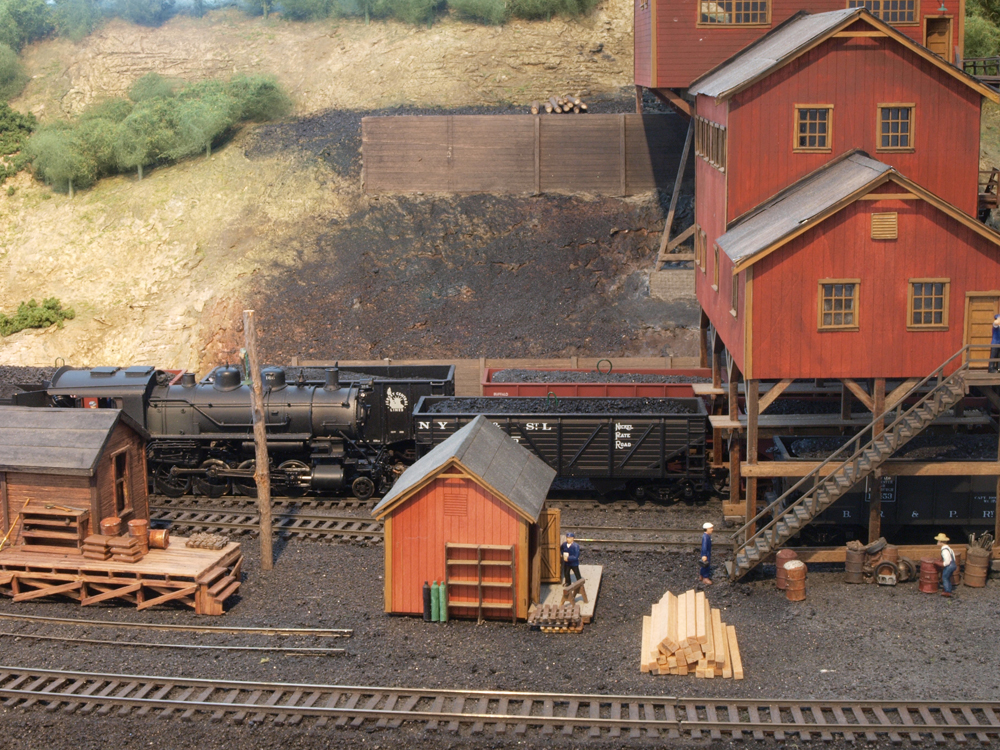
Being pressed for space, I had to cut a hole in the wall at Addison in order to have a tail track to operate the yard. This extension runs into a closet using a square tube. This prevents clothes from ending up on the track. Another space saver was to put a turntable in the staging area. This eliminates the need for switches and a tail track. The other reason is to be able to turn my steam locomotives. Another thing I did to make the layout look larger was to use mirrors at Austin both along Main Street in the business district and on the wall at the end of the yard. Tracks butting up to a wall did not look right and the mirror did the trick. I had a lot of actual photos of Austin, so I used one showing the company houses, had it blown up at the local copy shop and used it as a backdrop.
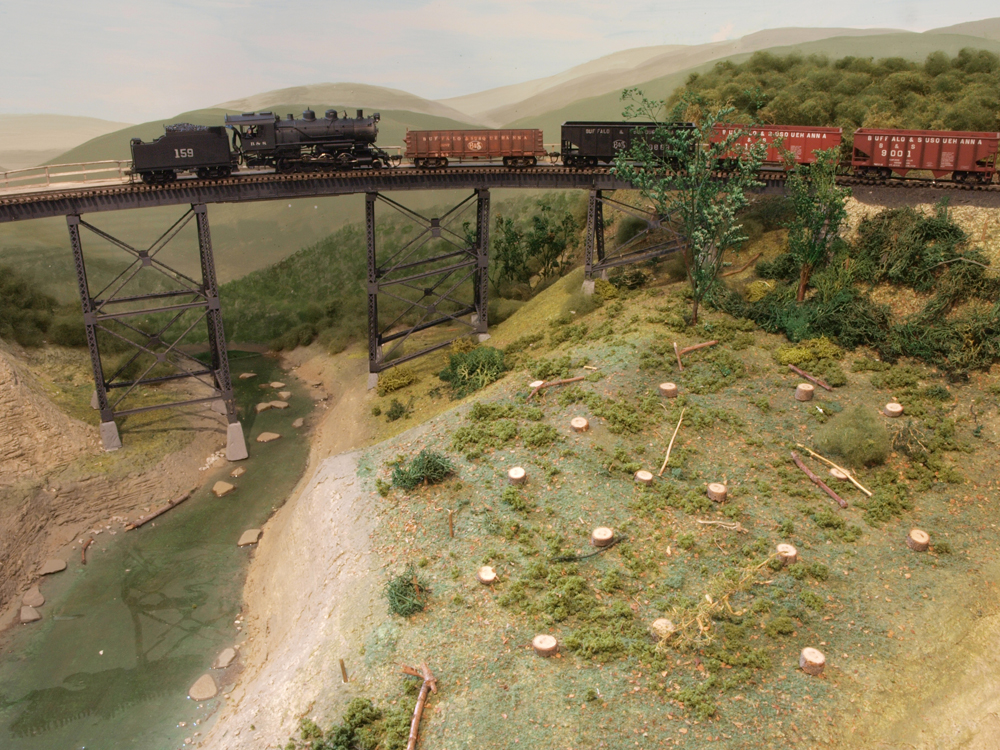
On my many trips into Pennsylvania, I picked up cinders and lumps of coal from along the B&S. I crushed it for hopper loads and roadbed. Leaves ground up in a blender are used for ground cover. I made my own molds for the stone work on the bridges and kitbashed most of the steel work on the bridges. The scenery is built up using chicken wire, newspaper, plaster wrap, and Sculptamold.
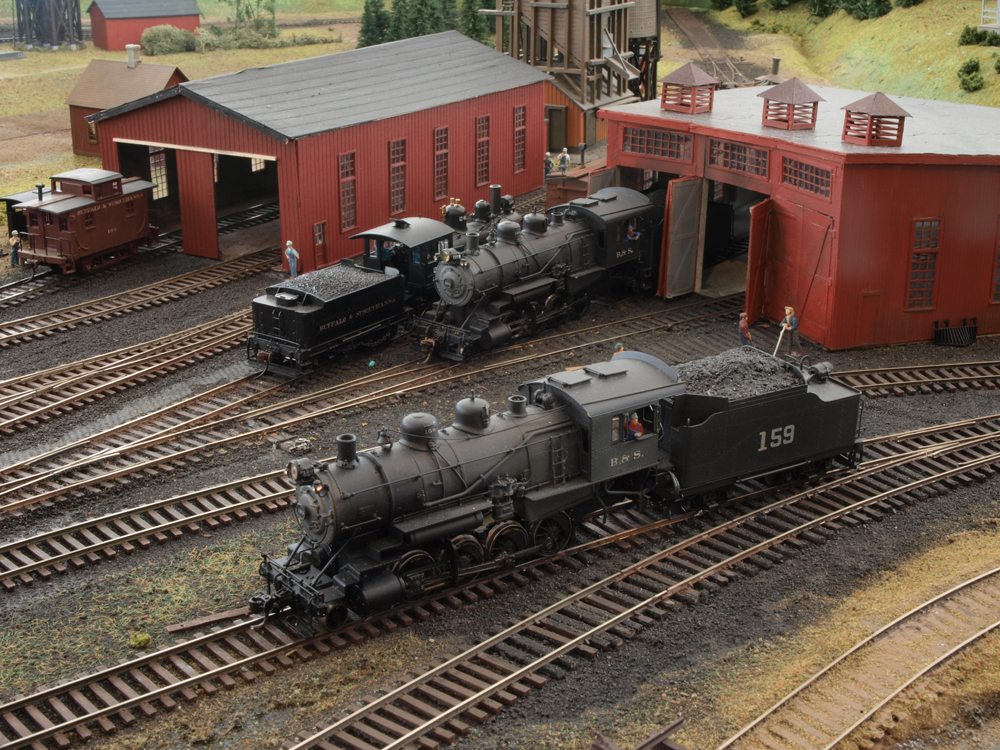
There is enough to do on the layout to keep two or three people busy running trains. A passenger train is run between Austin and Addison and back. The Erie runs a train between Hornell and Addison with empties and picks up loads at Addison. The B&S road engines are always busy hauling lumber and freight between Austin and Addison and, of course, the coal trains to and from the mine at Sagamore. Sometimes the coal train will require two locomotives to get the hoppers up the 3 percent grade to the mine. The Goodyear Lumber Co. runs a log train to the woods with the shay, and the climax can be busy switching cars at the saw mill.
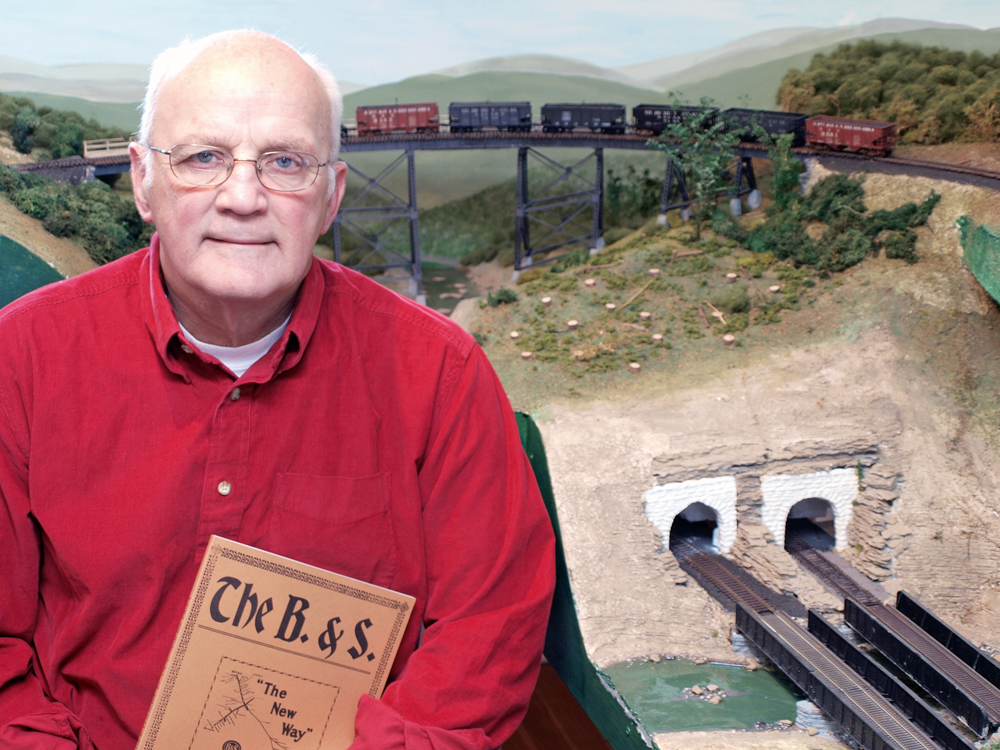
Paul Pietrak has been retired since 1995 and is a long time Buffalo & Susquehanna fan. So much so that he published a book on the B&S back in the 1960s. This project led him to publish three other railroad books. Entitled The Buffalo, Rochester & Pittsburgh, The Pittsburg, Shawmut & Northern and The Coudersport & Port Allegany and the New York & Pennsylvania. A fifth book entitled The Western New York & Pennsylvania was published with two other railfans in 2000. Along with his model railroad, Paul collects railroad lanterns, keys, and buttons. Back in 1966 he started a newsletter for the Key Lock & Lantern collectors. He lives with his love Mary Anne in Orchard Park, N.Y.





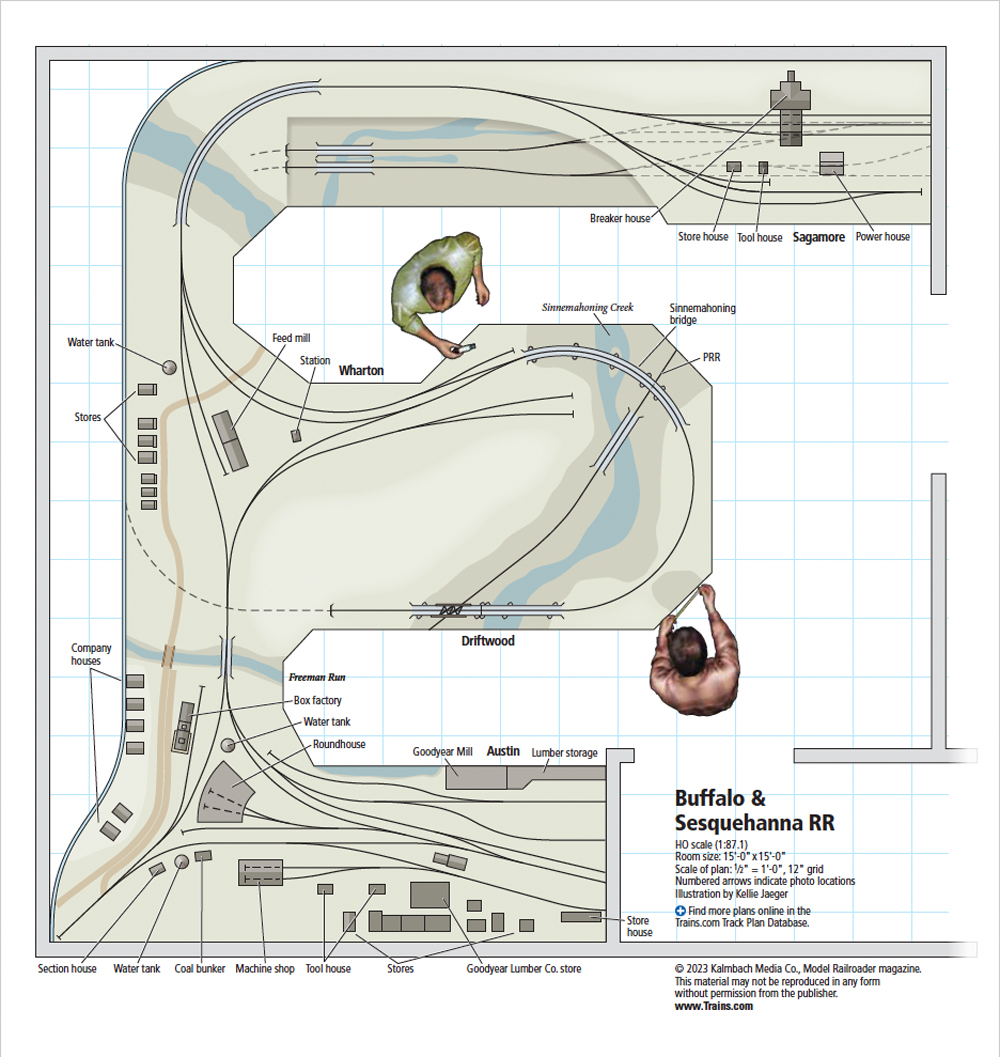



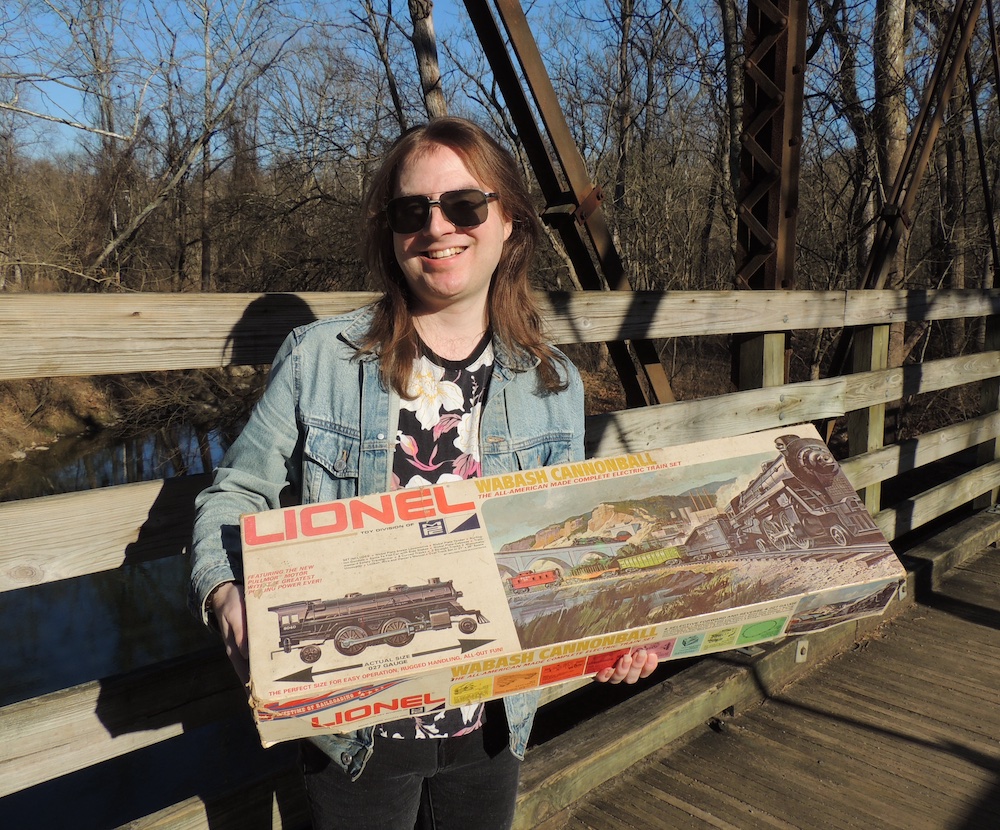
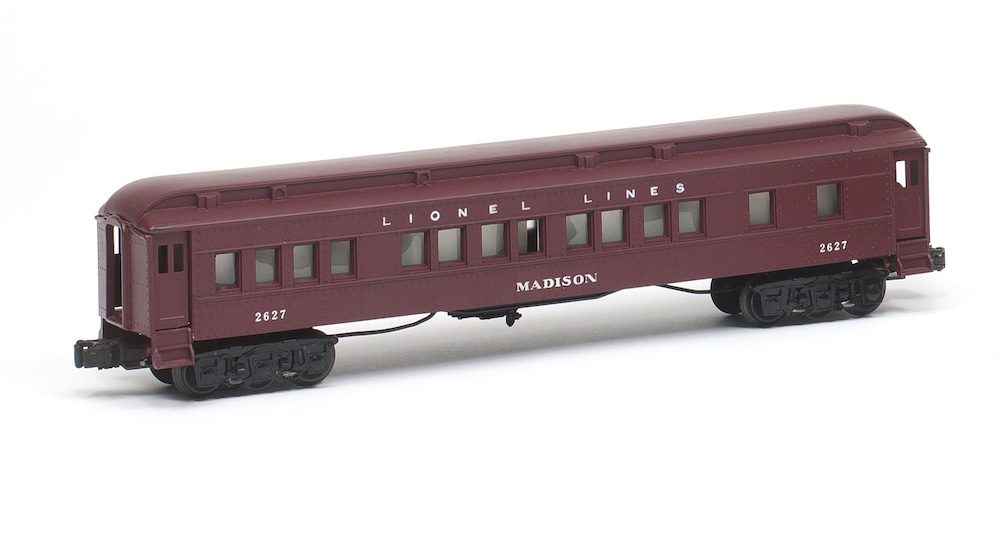




I’m a big fan of Paul’s work — I wish his books were still in print. It’s nice to know that he’s a modeler, as well as an author and rail historian. The layout looks great and replicates a fascinating railroad!
My grandfather and his two brothers worked for the B&S in Galeton PA in the 1910s. I have many fond memories watching the WAG and still have relatives in Cowanesque Valley. Thank you for sharing your story.